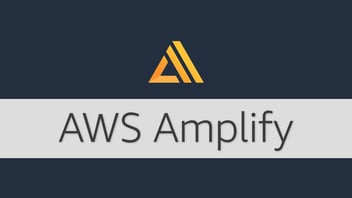Infrastructure as Code (IaC) is a process where you configure and set up the cloud services for your software using templates. This method can be used for the management of all cloud services, e.g., virtual machines, virtual networks, load balancers, or databases. Infrastructure as Code is a perfect counterpoint to configuring and installing cloud services manually with AWS Management Console, Azure Portal, or Google Cloud Console.
Definition files can be used to manage and change cloud environments. During the software development process, cloud service components can be added to or removed from the definition file, and the updates are reflected in the cloud environment. Examples of useful IaC tools are Cloud Formation (AWS), Azure Resource Manager (Azure), Cloud Deployment Manager (Google Cloud Platform), and the universally applicable Terraform.
As cloud-based software is ever more tightly bound to cloud environments, changes in software often also require changes in the cloud environment. Definition files allow you to maintain control over your cloud environment, reduce the risk of human error, and enhance the quality of the software development process.
1. Quality
Cloud service definition files are part of a highly automated delivery pipeline, meaning that cloud environments are also updated during software releases. This is especially nifty when you use separate test and production environments. Definition files allow you to create completely identical environments. In your test environment, you can ensure that changes in the cloud environment won’t affect your software’s performance before final deployment.
2. Cost savings
You can use the same exact services for your test and production environments, but in the test environment, you may want to, for example, parameterize your database and reduce its size. Shutting down your test environments when you do not actively need them can also help you save costs. Furthermore, you are saving time when software developers don’t have to manage and update several different cloud environments manually.
3. Security
By fully automating software releases and cloud service configuration, you no longer need to grant admin rights to the cloud service management console to a large number of administrators. The controlled management of cloud environments using definition files reduces the risk of human error and takeovers. Definition files are used to configure access rights to the cloud environment, including access management to databases or virtual machines. When access management is defined in the definition file, its security can be analyzed using automated tools.
4. Traceability and transparency
Modern software relies strongly on cloud environments. Changes in software code effect the cloud environment and vice versa. Combining the cloud environment’s infrastructure definition with the software code in your version control allows you to track and review changes in the cloud architecture, resulting in effective problem-solving.
Cloud components are often interdependent. For example, databases must be located in the same virtual network as application servers. These interdependencies can be clearly described in the definition file. In other words, you are also documenting your cloud environment and its dependencies.
5. Versioning
When you need a new cloud component for your software, the addition is made to the definition file, and the changes are pushed to version control together with the code changes. The definition file acts as the glue between the software code and the required cloud components in version control. This way, you ensure that the software automatically has access to the necessary infrastructure when the software is released.
6. Reviews
Software code peer reviews are an integral part of high-quality software projects. When the cloud environment description and its revisions are recorded in version control and the definition file, all changes to the cloud environment can be reviewed before deployment. This allows for enhanced quality and makes the sharing of information more efficient.



